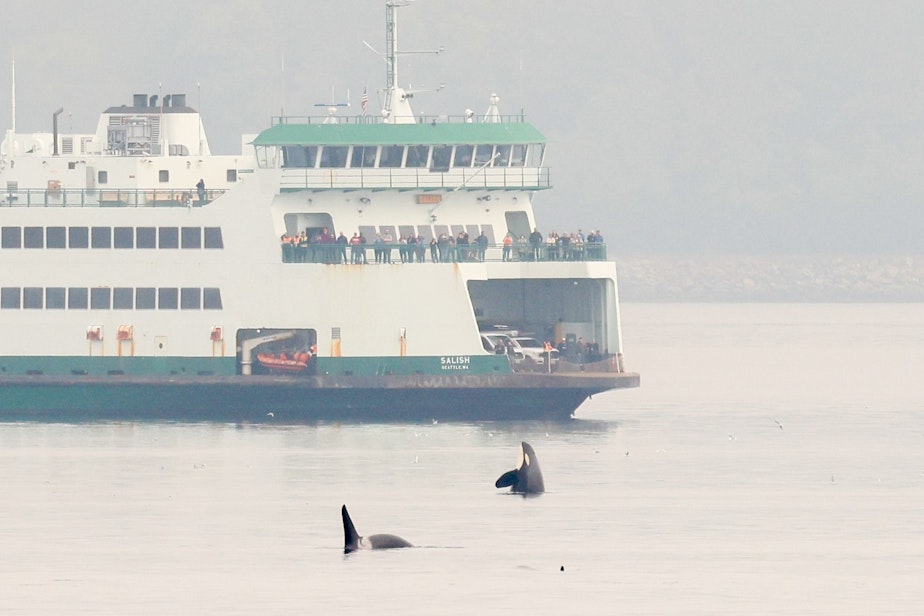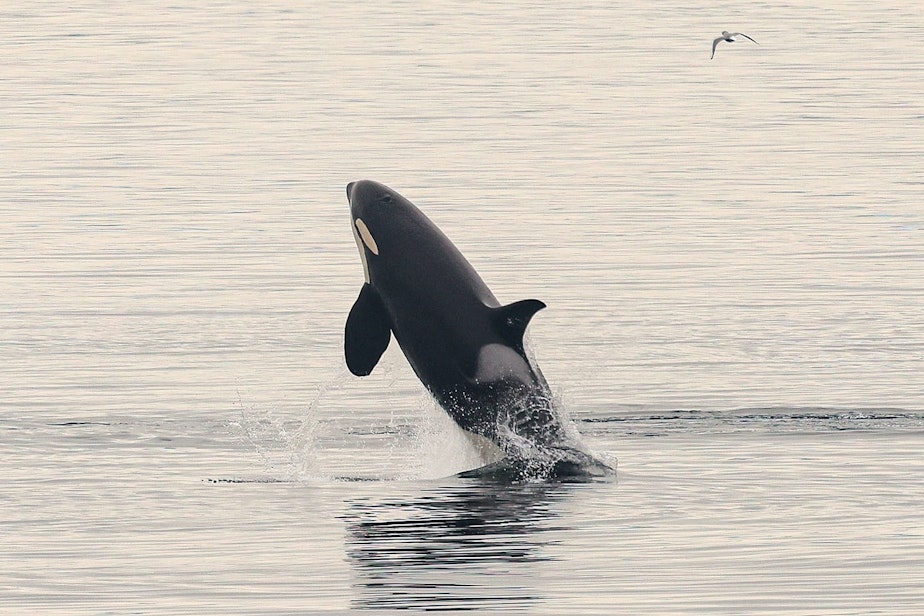Shhh! The orcas are back in Puget Sound

At least 20 endangered orcas delighted Seattle-area whale watchers Thursday with their first visit of the fall to central Puget Sound.
Nurse Jolena Tagg was watching the orcas from shore in the fog, then hopped on the Edmonds-Kingston ferry for a better look.
“They were just everywhere,” Tagg said. “It made it actually really hard to even get a good picture at times because you didn't know where to look.”
Eastbound and westbound ferries stopped for about 15 minutes to wait for the southern resident killer whales to pass safely.
“It was insane,” Tagg said. “We're all on the ferries ooh-ing and ahh-ing.”
Beyond sparking joy in onlookers, the orcas’ return triggered a three-month-long voluntary slowdown for big ships motoring through Puget Sound.
Sponsored
“Today is the day that we start telling all the large commercial vessels heading into Seattle and Tacoma, ‘Please slow down to be safer and quieter around the whales,’” Quiet Sound initiative director Rachel Aronson said Thursday.
In the inky depths, orcas hunt by listening for their prey. Underwater noise can disrupt their feeding as well as their communications with each other.
The slowdown area includes a 25-mile long stretch of Puget Sound from Edmonds to Admiralty Inlet near Port Townsend.
Canada’s Port of Vancouver has been asking commercial vessels to reduce their speeds in some nearby areas since 2017, with seasonal voluntary slowdown zones at the entrance of the Strait of Juan de Fuca and in Haro Strait, west of the San Juan Islands.
Waters off the busy ports of Seattle and Tacoma are not included in Quiet Sound’s slowdown area, but Aronson said very few ships would accelerate there after passing through the North Puget Sound slowdown area.
Sponsored

Quiet Sound representatives, with help from the U.S. Coast Guard, ask mariners to slow from their typical 18 knots (21 miles an hour) to 14.5 knots (17 miles an hour).
“It's a reduction of about 30% of their speed, but it takes away about almost 50% of their noise pollution,” Aronson said.
Aronson said the reduced speed also lowers ships’ emissions of greenhouse gases and other air pollutants by about 17%.
In 2022, the first year of the Quiet Sound program, 469 of the 670 big ships passing through those waters slowed voluntarily.
Sponsored
“It's really nice to hear that these boats are becoming more aware and taking the time to slow down,” Tagg said.
“It’s such a simple thing, but it helps,” Oceans Initiative chief scientist Rob Williams said in an email. “When ships slow down and make less noise, the whales do feed more often.”
“Couple noise reduction with salmon restoration, and we’d get even more [orca] recovery,” Williams added.
The southern resident killer whales currently number 75, according to the Center for Whale Research, with a lack of salmon, disturbance from vessels, and water pollution the main threats to their survival.




